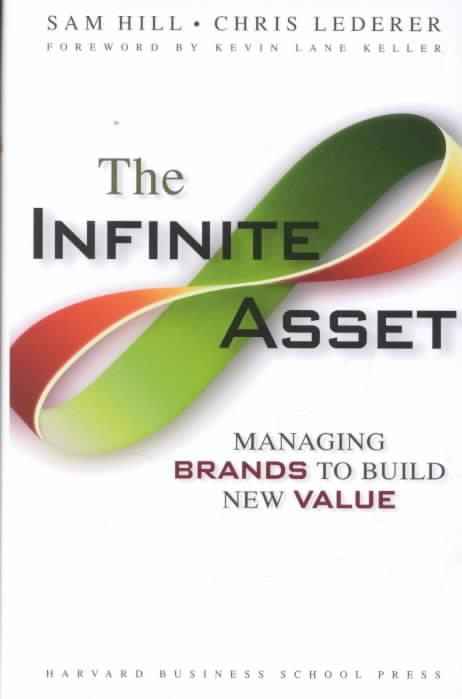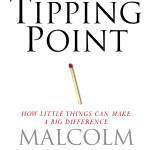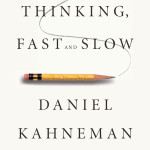Remember when brand management was as straightforward as promoting a single product or service? Today, brands mingle so much – McDonald’s and Disney partner on promotional giveaways, Subaru markets an L.L. Bean edition of the Outback, Toys R Us and Amazon.com jointly launch an online toy store – a whole system of brands can make or break a product and a career. Once content to “mind their own brands,” marketers need a radically different game plan to succeed in this complex marketplace.
In The Infinite Asset, Sam Hill and Chris Lederer unveil an ingenious strategy – the Brand Portfolio Approach – that exponentially increases the value of brands by exploding them beyond the boundaries of their division or even their parent company. The authors argue that a company’s brand portfolio must reflect how the target customer actually views the brand; it must encompass every brand – whether the company owns it or not – that affects the buying decision.
Based on thirty years of consulting experience and extensive research across industries, the authors introduce a breakthrough 3-D mapping tool – the brand portfolio molecule – that lets managers visualize all elements of a brand and how they interact to create new value. Compelling case studies apply the model to the brand strategies of companies including 3M, Cadillac, Miller Beer, and Yahoo!. In addition, a comprehensive set of implementation tools guide marketers in using the model to:
* identify the “lead brand” in the eyes of the customer
* find and fill product holes
* decide whether to extend, prune, or reposition a brand
* arrive at the right number of brands
* determine how and when to use a corporate brand as an umbrella
* allocate marketing funds most effectively
* trace brand value using informative metrics
* convert brand equity into shareholder value and more
The first to provide a holistic model for brand value creation and management, this book is the must-have guide to leveraging every company’s infinite asset for lasting competitive advantage. [From: Barnesandnoble.com]
How to Profit from the ‘Intersection’ of Brands
Stand-alone brands are becoming fewer for good reason: Most firms are discovering the value and profitability available from the combination of different and widely diverse brands. Networking in our economy is on the increase because it works. Volkswagen and Trek are selling cars and bicycles together. American Airlines, Citibank and Visa offer a credit card together. Even companies like Philips and Levi Strauss have come together to create a jacket equipped with a cell phone in the collar and an MP3 player in the pocket. The combinations and strategies for marketing brands are endless, and the ones that succeed are the ones that tap into the true potential of the brands involved.
The authors of The Infinite Asset suggest that “the greatest brand value is now being created in the intersections between individual brands”. This is why Kmart and Martha Stewart have teamed up to make both of their brands even more valuable. Of course, the downside of the combo platter approach to branding is that if one part of the equation suffers a setback, so does the rest. The authors point out the negative impact that the Firestone tire recall had on many car companies to illustrate the new reality that accompanies the hand-in-hand approach to branding: What one brand manager does with his or her brand can affect the brand of another in many ways.
Managing Brands as Portfolios
To leverage the potential power of brands while also keeping risks to a minimum, Hill and Lederer, partners at Helios Consulting Group, have developed a plan that stresses the importance of managing brands as portfolios, and updating traditional thinking about brand portfolios and how they work. The brand portfolios the authors develop include every brand involved in the consumer’s decision to buy. This definition would place NBC, Nike and TNT in the NBA portfolio since its marketing plan depends on its contracts with these companies.
The authors write that the management and organization of these new brand portfolios should not leave out the crucial element of the consumer’s perspective. Brand organization should not forget the importance of managing brands individually, and should remember that creating new value is still the name of the game. This is why brand portfolio managers need to be able to see the brand agenda both inside an organization’s brand system and outside of it.
The road to success begins with a visualization of the portfolio that represents the characteristics and the relationships of the brands included in it. A set of measurement tools is also needed to manage the brand portfolio, along with an organization that embraces the concept of brand portfolio management.
The Brand Portfolio Molecule
To help brand portfolio managers grasp the breadth of an entire portfolio, the authors have developed the “brand portfolio molecule” (BPM) that not only depicts the quantitative and dynamic aspects of the portfolio, but also takes into account all of the potential areas for value creation and destruction. It looks like the model of a molecule, and each part represents an element of the brand both inside a firm and outside of it. This visual model will help brand portfolio managers see their opportunities for profit, and vulnerabilities to risk. It also defines the many brands that a company should consider in its brand decisions.
The size of each sphere on the BPM depicts the relative value of the different brands in the portfolio. The bigger the sphere, the more a consumer values it when making a purchase. Different colors depict the levels of influence the sphere has on the decision to purchase. The legs of the BPM demonstrate how the various brands in the portfolio branch out and connect to each other, and the positions of the spheres on the BPM explain their market position in relation to the other brands.
Every brand portfolio must express its objectives according to risks, returns, brand equity creation, strategic flexibility and growth. Specifically, a brand portfolio needs:
- A vision for the value it intends to create and a clear set of performance objectives.
- Strategic guidelines for the overall portfolio.
- A set of specific working tools and tactical approaches to improve performance of the portfolio.
Why Soundview Likes This Book
This new approach of looking at brand molecules, rather than a single brand, creates infinite possibilities of value in their combinations. Hill and Lederer offer a holistic approach to brand value creation that is fresh and timely. Their many suggestions and examples for leveraging assets for competitive advantage are well-conceived, well-defined and easy to read. The Infinite Asset lays the groundwork from which any company can begin to approach a management plan that maximizes brand strength through beneficial alliances that unlock unexpected value. [From: Soundview Executive Book Summaries]
In this intriguing book, which will strike most readers as a glib theoretical exercise, the authors contend, “the greatest brand value is now being created in the intersections between individual brands. Kmart and Martha Stewart are worth more together than they are apart.” The authors, partners at Helios Consulting, lay out a formula for capitalizing on this idea: chart every interaction a brand has from where it’s advertised to who its partners are and determine how to get the most out of every relationship, and they explain this formula in three simple chapters (understanding, optimizing and implementing). [From: Publishersweekly.com]
Sam Hill and Chris Lederer say brand-dominated business strategies will be the true road to commercial success for at least 10 more years. But when they say it, they aren’t talking about today’s prevailing approach, in which brands owned by a single company are combined in the manner of the Hewlett-Packard LaserJet printer. That’s old news, contend Hill and Lederer, marketing veterans and partners at Helios Consulting. The next level, they say, is “brand portfolios”–actively managed collections of every brand, regardless of ownership, that intersects with another. Developing and running such systems (like those that connect Intel, Microsoft, and Dell, for example) is the subject of The Infinite Asset, a sharp and practical guide to adopting their well-considered suggestions on handling brand portfolios in the same way that financial portfolios are managed. The authors look at case studies of 3M and Miller Beer, among others, which help readers visualize the relationships that tie their brands to each other and to the outside world. They also put together an eight-part “toolkit” that covers brand extensions and repositioning, as well as an organizational design for implementing brand-portfolio management. [A Review from Amazon.com]
If you like this story, CLICK HERE to join the tribe of success-minded people just like you. You will love our weekly quick summaries of top stories, talks, books, movies, music and more with handy downloadable guides, cheat sheets, cliffs notes and quote books.














